Ok, I’ve posted way too much about Climbing Kilimanjaro recently. My next tourist activity was a Safari, but let’s make this one shorter and focus on the photos.
Fun facts:
- Safari originally means voyage in Kiswahili.
- Simba means lion.
- Hakuna matata roughly means no worries.
Being driven around in a vehicle all day and staring at things was not my favorite. That said, I still enjoyed our 4 day Safari in 3 parks of Tanzania’s Northern Circuit. We saw way more animals than I had expected, and we got pretty close to many of them.
Tarangire
In the afternoon of day one we visited Tarangire National Park. Not the most famous one, but very easily accessible from Arusha. A tarmac road gets you almost to the northern gate of the park. And there is settlements and agriculture right next to the park’s boundaries. Yet we saw elephants and a lion not far from there. We saw heaps of other animals, too, even though we only visited a tiny section of the park.

Elephants far, … 
elephants near, … 
elephants coming, … 
elephants going (notice the termite mound in the back), … 
elephants in the grass, … 
elephants by the water, … 
elephants in a river bed, … 
getting tired of Elephants. 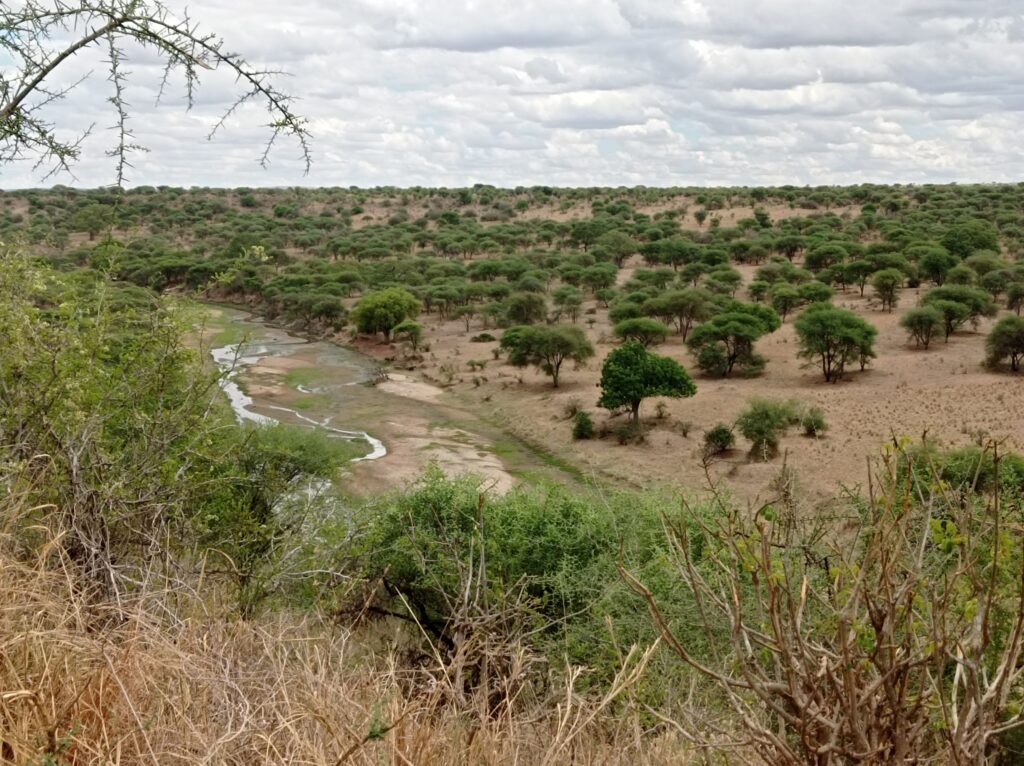
The Landscape… 
has a river valley… 
with nice cliffs, … 
cliffs all around, … 
but the river was mostly dried up when I visited. 
Termite mounds galore, bigger than in the Serengeti. 
The savanna landscape has loads of trees, e.g. this one with weird fruits, … 
or this baobab, … 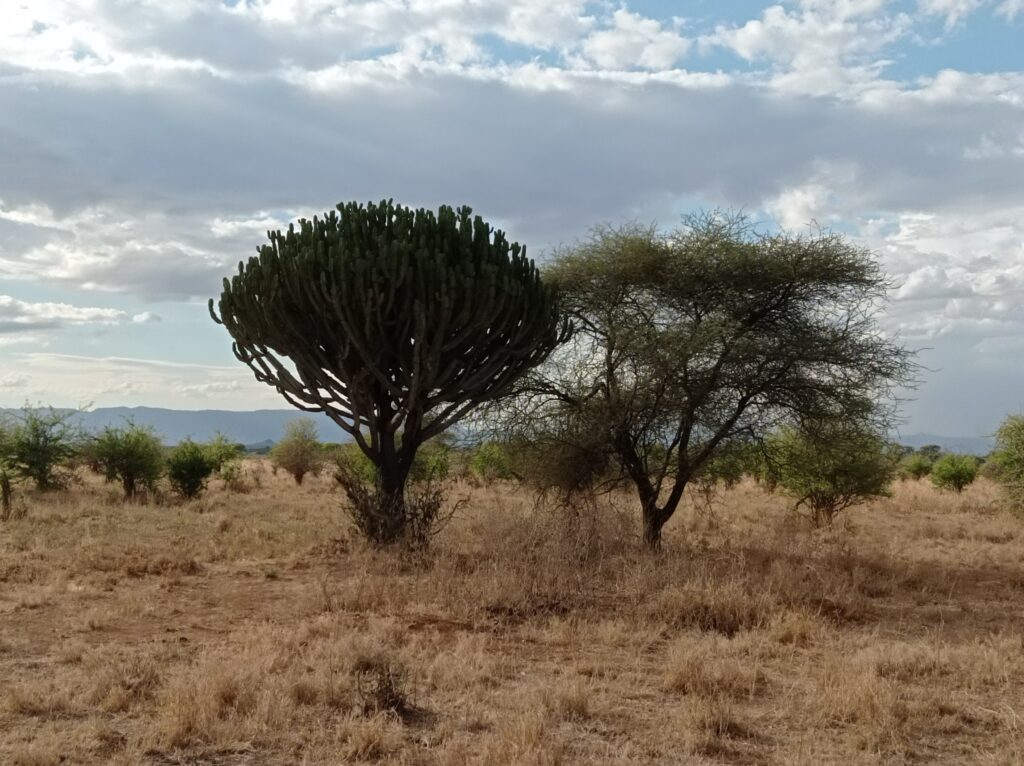
or this cactus growing to tree size (left). 
Of course trees attract giraffes, … 
giraffes who look kinda suspicious. 
Yeah, keep walking giraffe! 
Warthogs, minding their own business. 
Plenty of Zebras and some antelopes, … 
gazelles and elusive ostriches, … 
herds of gnu, … 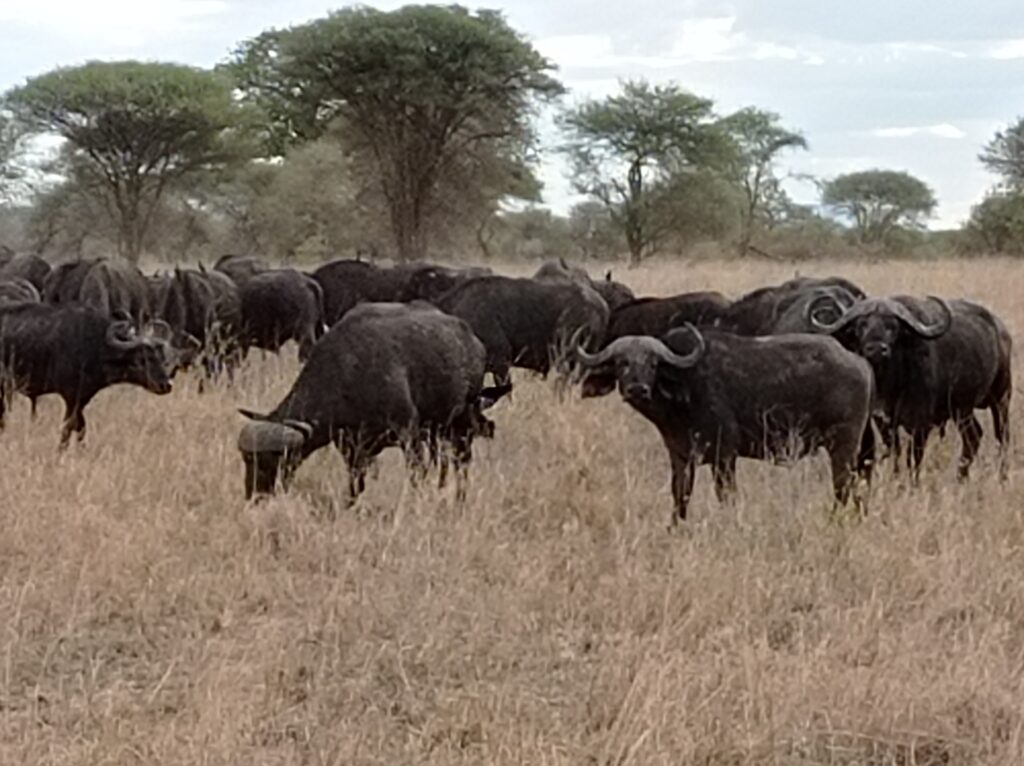
and even buffaloes, … 
loads of big buffaloes. 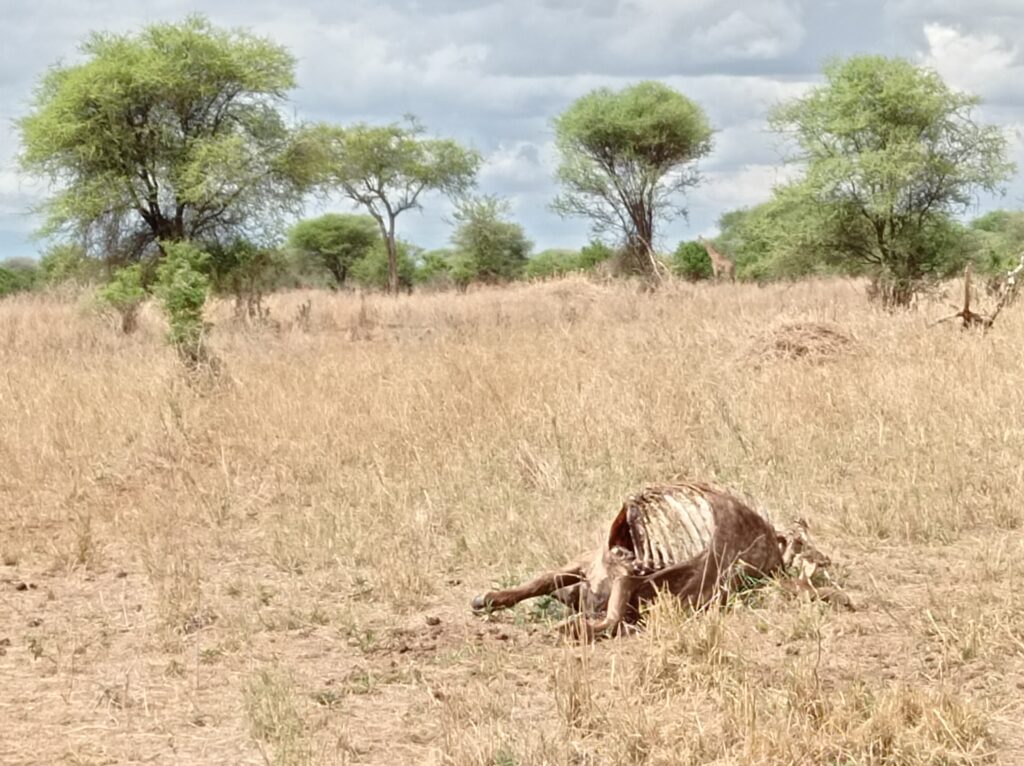
The circle of life. 
Also many birds, … 
this is one of the bigger ones. 
And cheeky monkeys, trying to steel my banana.
Not these ones though, these two are cool.
After visiting Tarangire, we drove northward and spent the night in camping hotel nearby Lake Manyara.
Ngorongoro (pass through)
The next morning, it was just a short drive to Ngorongoro Conservation Area, with its iconic crater. However, today we would only drive by on our way to our main goal, the Serengeti. We did stop at a view point on the crater rim though, and saw heaps of animals by the road on the outer slopes of the crater. Btw, the road was all gravel from here on.
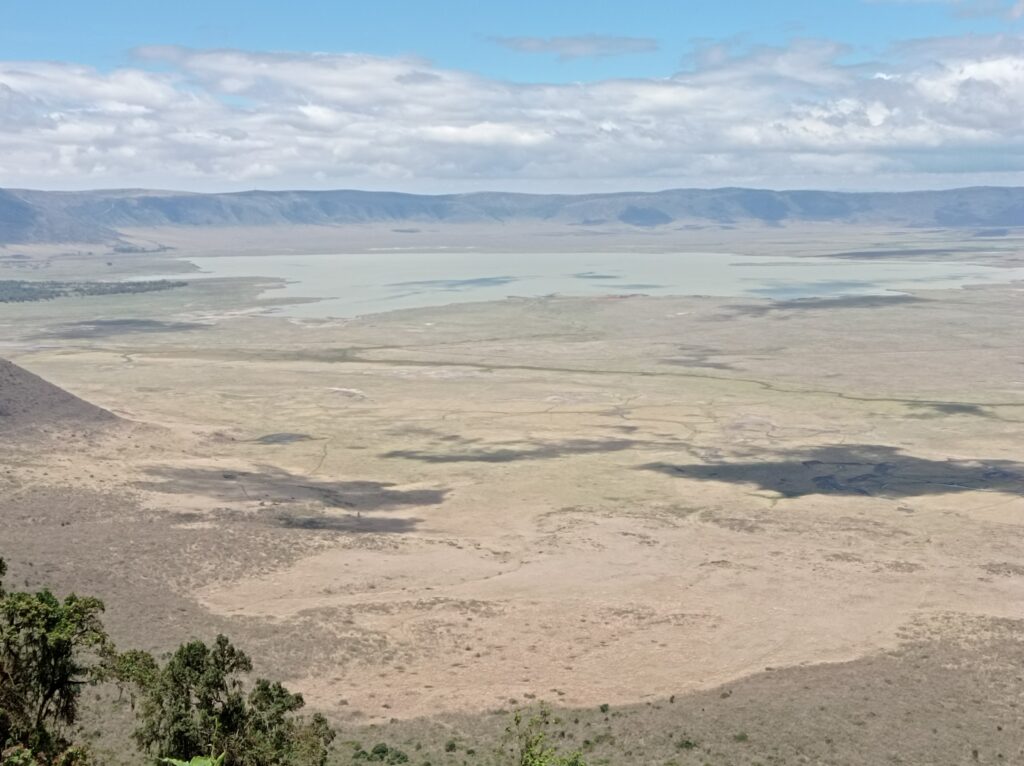
Western part of Ngorongoro crater, with Lake Magadi, and the northern crater rim in the back. 
Eastern part of the Ngorongoro crater, with the norhern crater rim in the back. 
Yep, I was there. 
Simba campsite on the crater rim. The climate seems more moderate here, and the landscape reminds me of Bayerisches Oberland at home. 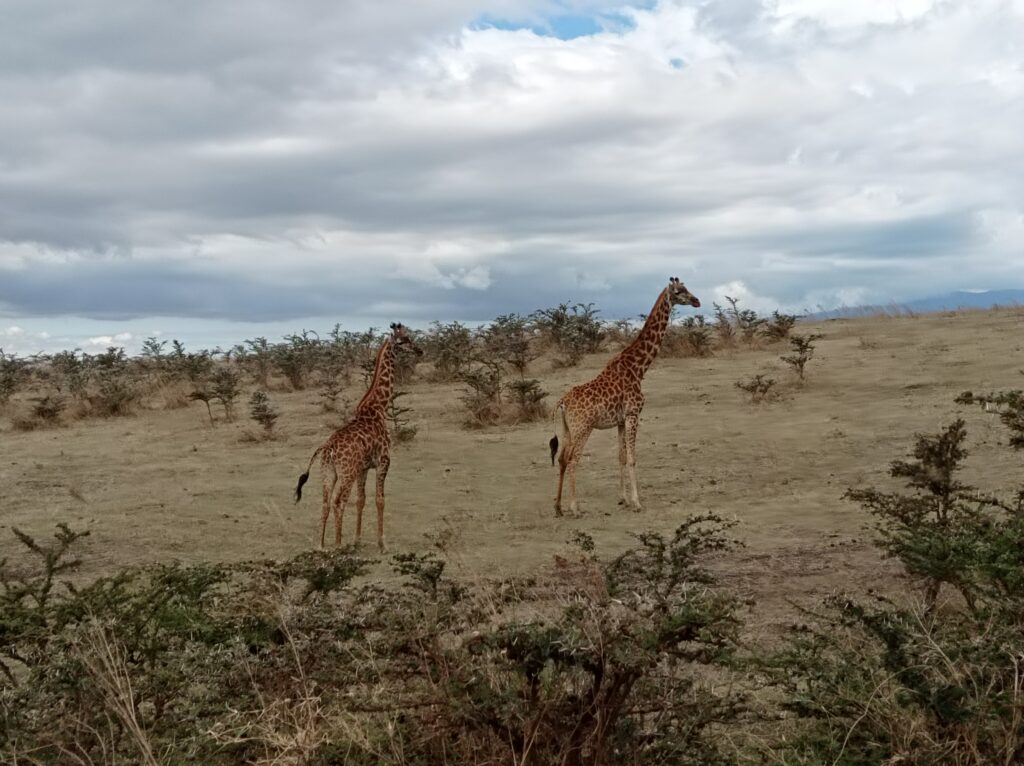
Outside the crater there’s giraffes, … 
heaps of giraffes, … 
giraffes eating trees as usual, 
and ignoring the wide plains below them.
Serengeti
Serengeti may be derived from a Maasai word for endless plain. And indeed, after Ngorongoro the landscape gets very flat. There’s still moderate slopes, a few wadis, and hills in the background. But by the time we reached the gates of Serengeti National Park in the late afternoon, it was plains all around.
We weren’t done driving yet. For the rest of the day, we followed an almost straight dust road towards Seronera at the center of the park. Even from that road, we could see tons of animals all around us.

Entering the Serengeti underneath a Bavarian sky. 
Lazy lions, just by the road. 100 meters further we had our first flat tire. 
More lazy lions. Can you find them? 
I love the rock formations that are sprinkled all over the plains. 
Where there is water, there is hippos (look all the way back) and palm trees. 
Though there’s hills in the distance, the plains do seem endless. 
Yupp, there’s elephants, too, … 
heaps of elephants.
We reached Nguchiro camp site around sunset. Though there is a lot of human activity here in the Seronera area, there’s still wild animals around. When I went to the bathroom at night, I saw eyes staring at me in the distance. After turning the corner to the bathroom, there was hyena just ten meters away. Since it was looking the other way, I first thought it’s a lion.
In the morning our guide explained something like: “Don’t worry, lion killed buffalo nearby. Hyenas are here for the carcass.” Wait what? There was lions nearby!?
Anyway, all tourists and crew survived. We got up early and started exploring the Serengeti.

Sunrise hyena with balloon in the back, … 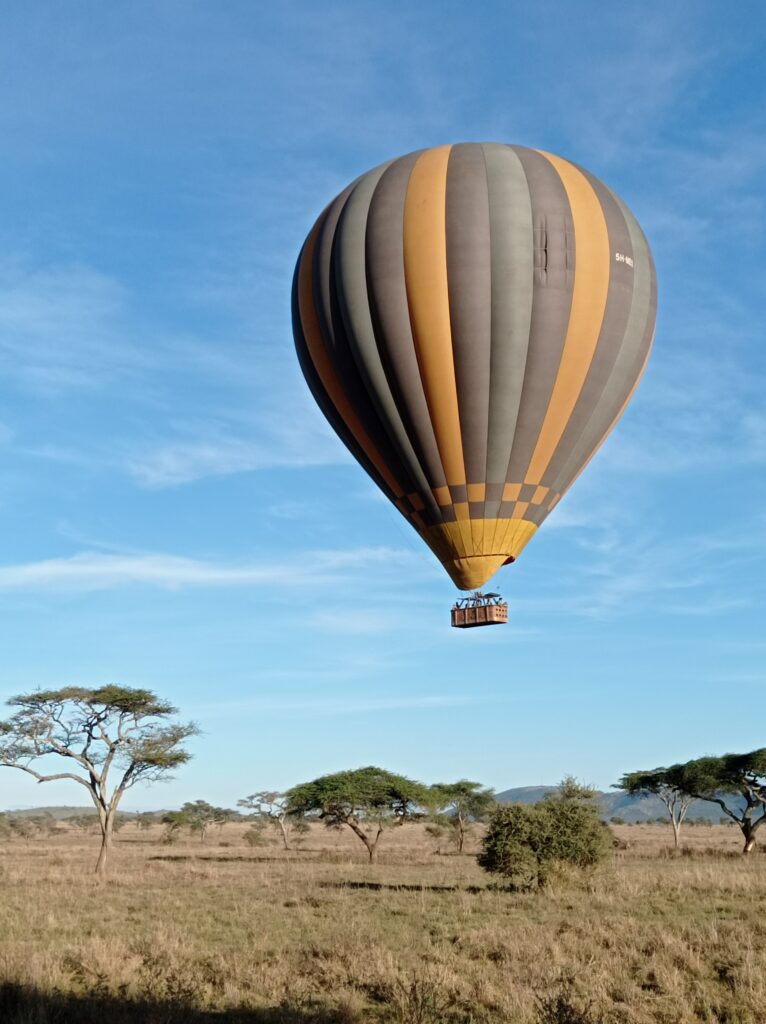
and a close-up of (that same?) balloon later. 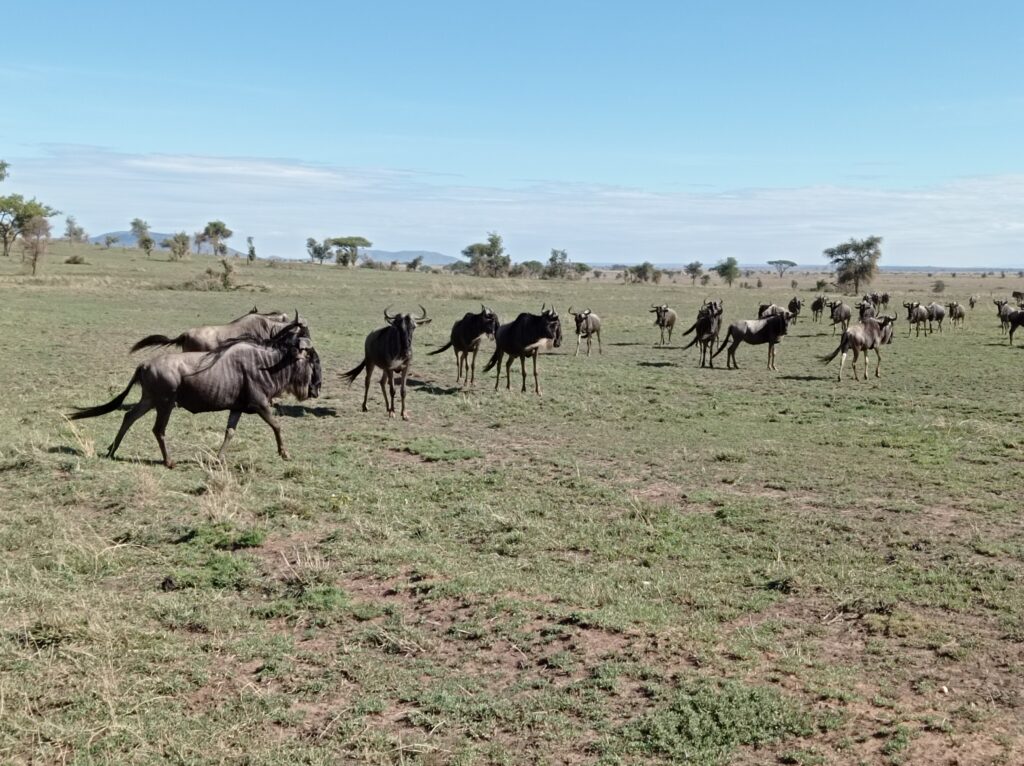
Heaps of gnus… 
and zebras everywhere. 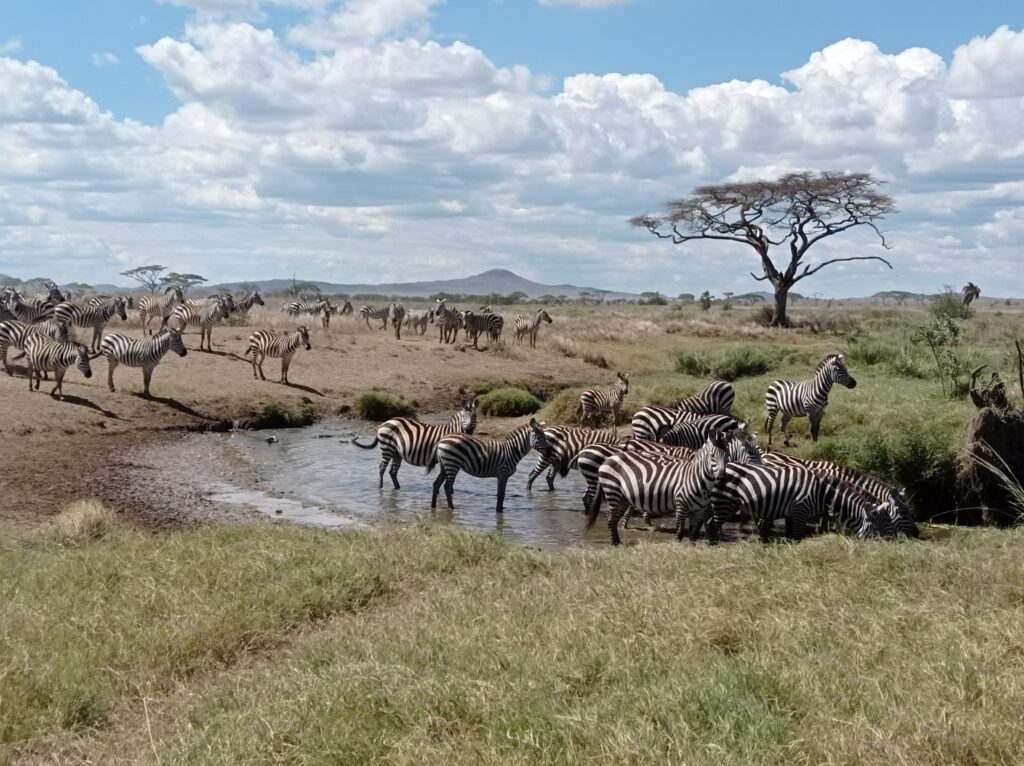
Especially where there’s water, … 
which also means more hippos. 
Look at all these scavenger birds on the tree, called maribou storks. 
Here’s another maribou stork at our campsite. Somehow they manage to look even uglier than vultures. 
And of course lions, like these young males, … 
or this lazy couple. 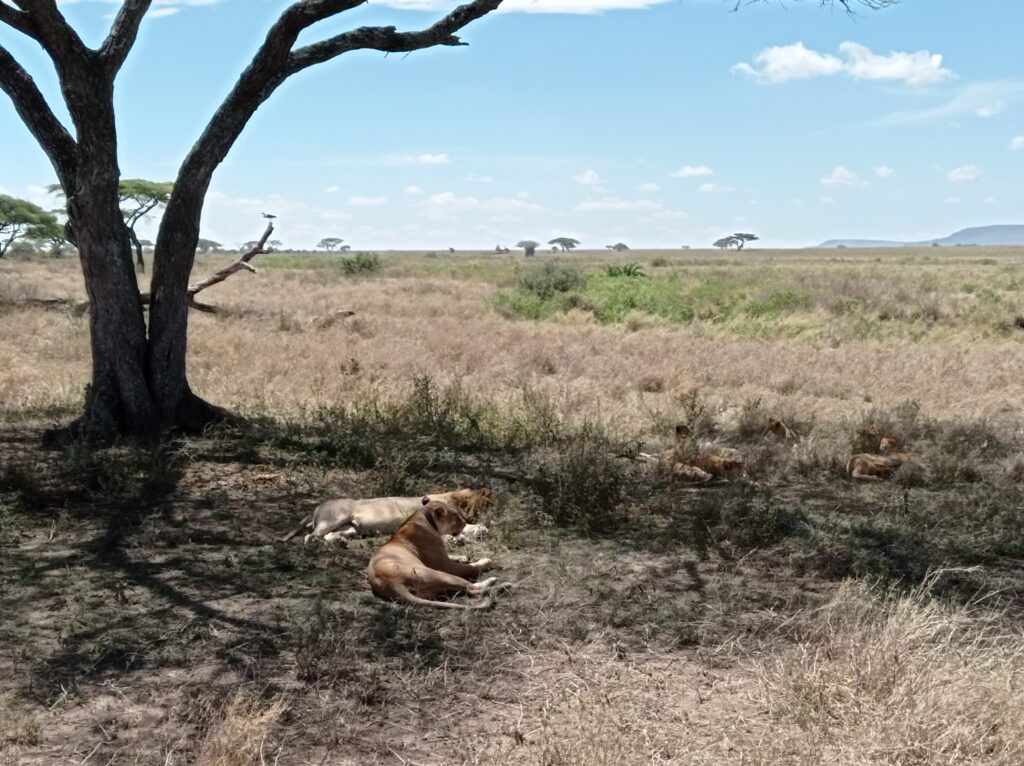
More lazy lions, … 
loads of lazy lions. 
See if you can find all the lions here… 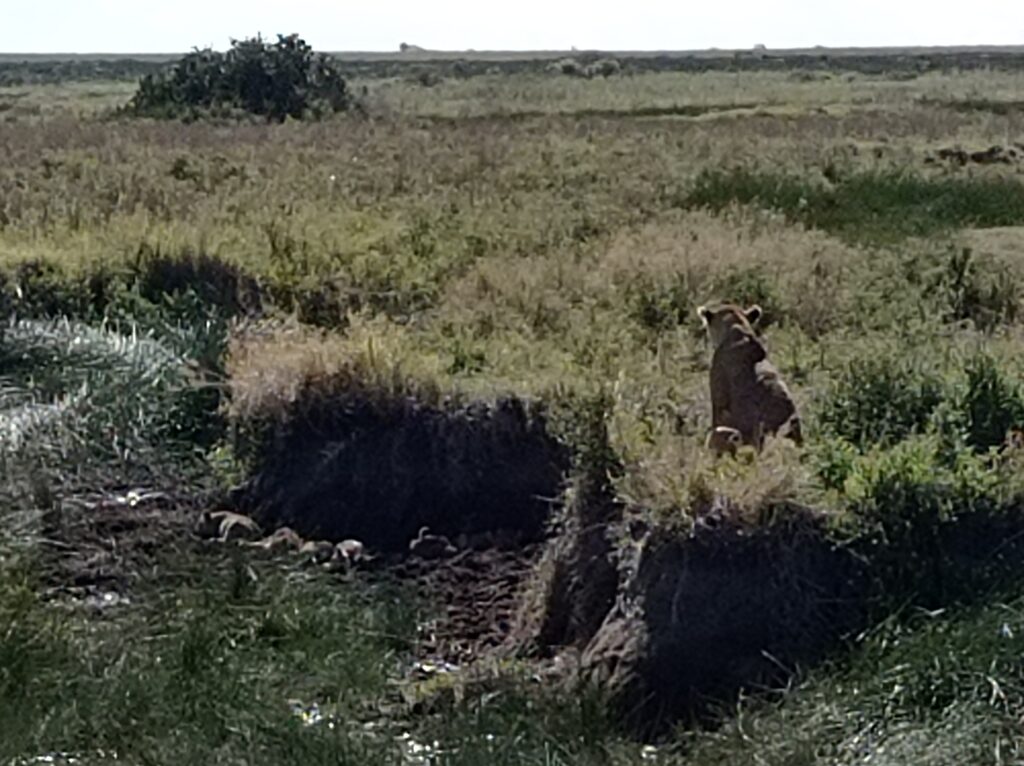
Hint: there’s cubs hiding by the river bank. 
And of course more elephants. 
On our way back we had our second flat tire. Almost same spot as the day before. But no lions in sight, so we were allowed to leave the car.
We came back to the campsite for a late lunch, and in the afternoon we slowly started heading back to Ngorongoro on that long straight gravel road that we had arrived on the day before. Tanzanian massage, is what they call it.
Ngorongoro Crater
We headed back up the outer slopes of the Ngorongoro caldera, zooming by Maasai herds and villages. We arrived at Simba campsite before sunset and set up camp. We were soon joined by a buffalo and several zebras, who kept grazing between our tents all night.
The next day started early and was all about Ngorongoro crater. The main road down into the crater was not far from our campsite, and it’s the only sealed road that I’ve seen in Tanzania’s parks. A gravel road this steep would just erode away too quickly, in particular during rainfall.
The slopes of the crater are partly forested, but down inside the crater it’s a huge plain, hosting a landscape of steppe, savanna, and a few bodies of water, the biggest one being Lake Magadi. We’d see much of the same animals that we’d seen the days before, plus a few new ones. There’s also supposed to be rhinos, but we could only make one out in the far distance.

Descending into Ngorongoro crater, … 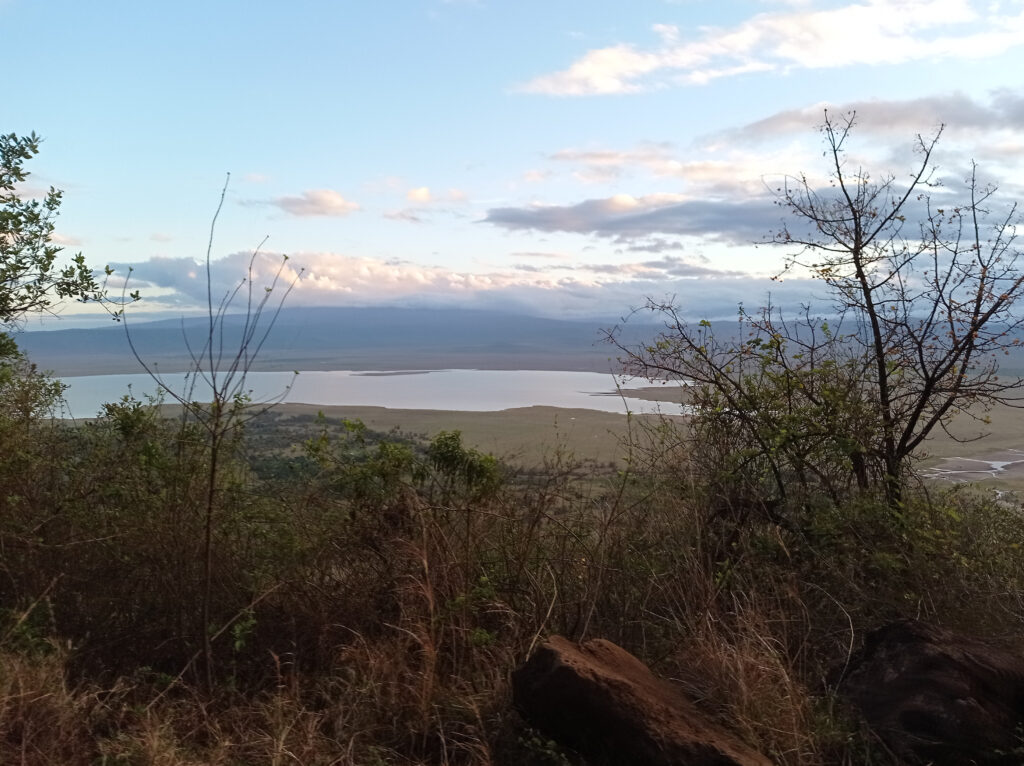
with views of Lake Magadi, … 
and the northern crater wall in the back. 
In a forest nearby to the crater rim, we met a big group of baboons, … 
including mothers with their babies, … 
and older kids, more independent of their moms, … 
all keen on climbing. 
The crater ground is mostly flat, … 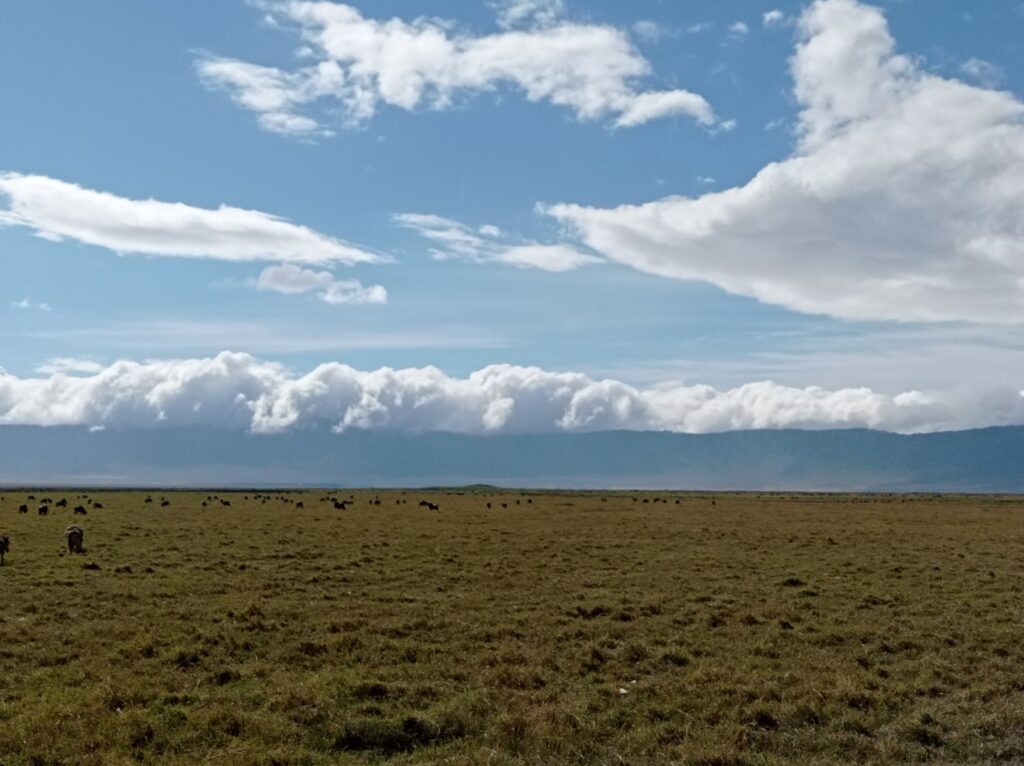
covered by grasslands, … 
with herds of gnus, zebras, and buffaloes all over the place, … 
only cut by gravel roads … 
and safari vehicle tracks. 
We finally saw two non-lazy lions, presumably sneaking up on a herd of zebras, … 
coming very close to our vehicle, but not minding us at all. 
There’s lazy hyenas though, specifically spotted hyenas, which look a lot cuter than most of the other hyenas that I’ve seen on film. 
There’s also smaller predators, like this Jackal or the serval that we saw in the distance. 
This is Ngoitokitok Springs, … 
a smaller body of water, … 
which ultimately drains into Lake Magadi. 
There’s a campsite by Ngoitokitok Springs, 
where we were visited by birds. 
There’s also bigger birds, … 
and huge flocks of birds by Lake Magadi, … 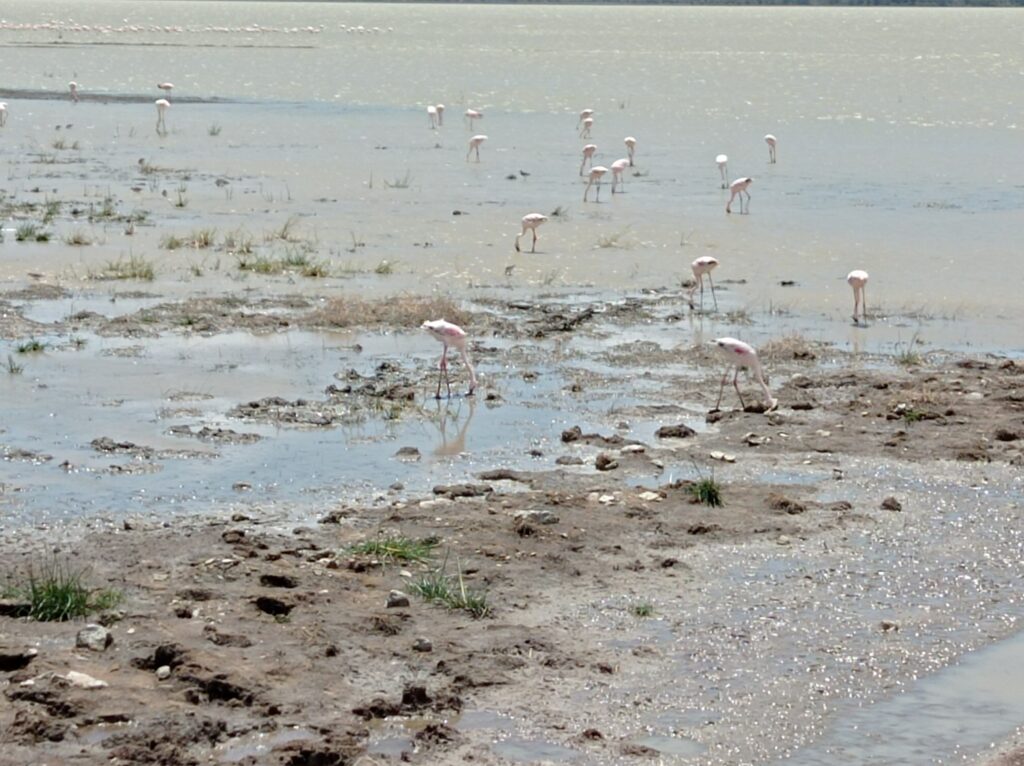
including these flamingos, who look pale due to changes in their diet, caused by recent changes of the lake’s salinity. 
There’s loads of other bird by the lake, but also bigger animals, like this buffalo, … 
or these zebras. 
And once again there’s elephants, … 
coming close to our vehicle, … 
a whole family of elephants including babies, … 
enjoying a bath in the mud.
In the early afternoon we returned to Simba campsite for a late lunch. Just as we entered the campsite, we had our third flat tire. Luckily our crew had fixed it by the time we finished lunch. After that, it was smooth cruising back to Arusha.


Comments are closed.